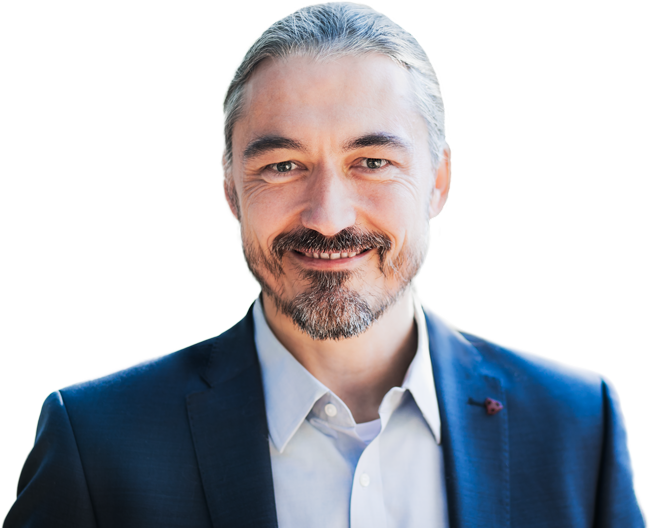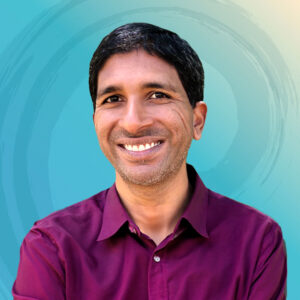Thomas Hübl: Welcome to the Point of Relation. My name is Thomas Hübl, and today I want to explore with you a little bit the correlation between our inner world, outer world, and how our inner and outer worlds create the coherence that we call “relating.”
So relating is a dataflow – moment to moment to moment. And so when we know more of our inner experience, we develop what we call inner coherence.
Inner Coherence is like the capacity to resonate and the capacity to feel more whole or wholesome. The different functions of our nervous system are integrated into each other, and this creates a flow. Imagine your nervous system channels data up and down the spine and then through your body. And so there’s a lot of data that flows up and down all the time. The more coherent is that data flow. We actually, first of all, feel better, is in our moment-to-moment experience because it’s like more sense of flow.
Whereas when there’s more stagnation, tension, and trauma in our body – we more often feel fragmented. So coherence collapses into different parts or different areas of fragmentation. There are different parts that are not really working together well. The intra-body data flow is impaired and reduced. And that, of course, creates symptoms. So then we feel tense, tired, and dense which means we don’t feel ourselves in certain areas or we feel overly stressed and activated. And the more we create coherence, we become more like a music instrument that is tuned. And that attunement makes it easier for me to feel you. It makes it easier for me to feel the group that I’m talking to. Why? Because the instrument naturally resonates.
So relating, typically we talk about relationships, but what we actually talk about is the process of relating is the moment to moment to moment data that actually flows like a good Internet connection. Without a good Internet connection, I can have many amazing emails, but they don’t go out or it takes a long time for me to send them. So there is potential, intelligence, and then there is the capacity to relate that intelligence to the world. And that’s why both are important – gifts, talents, intelligence and the capacity to relate that intelligence to other people or to the world and manifest something together as our world. Not even in our world, but as our world. We are co-creating this world together. And the world will look like the way we co-create it together.
The more disconnect we see, the more we say “A” but feel “B” we contribute to a world where there’s a lot of pain. Because we are part of that pain through our internal disconnect. The more we live a life where we practice more authenticity, being real, being open, transparent, and honest with each other, the more we unify our inner world, which means we contribute to a unified outer world.
So there is an internal practice, a “self-awareness practice,” as we call it, but then relating is more than just getting to know my inner world. Relating also means that I am aware of myself. I am aware of the space between us, which is often forgotten. The space in between us is very important. I am aware of you. And I feel you. So I feel myself, that’s the instrument, the spacing between us, and you. I believe that’s the basis of relating, and it’s also a core element in what we call in our work transparent communication.
But relating is more than just my own expression, it’s an awareness process. It’s an active listening, it’s an active receiving. It’s giving something into the relationship, being generous, and also being able to receive. It’s a giving and the receiving and the balance which creates generosity in the relationship. Generosity creates overflow.
So relating inner and outer coherence is my capacity to be aware of my own inner space. For some people, it’s very important to first develop an awareness of the inner space. For some people, that’s very natural. And no matter how it is, it’s an important tool. In order to play good music, whatever musicians you are – to play good music, we need to tune our instrument. It doesn’t matter if you play classical music, jazz, pop, rock, or anything else. And when we tune our instrument, we learn to feel more in the relationships in the process of relating. We feel the data flow. We feel the flow through our bodies. We feel the emotional resonance. We feel we are tuned into each other’s mental worlds.
When we are really connected, we feel it flow. When one of us gets more defensive, we leave a bit of the common space, mutual space. So that’s why an awareness of the space in between us is important because in open flow, there is a continuum. I and you are arising in a mutual space. When we feel defensive, there’s you and then over here is me. And over there, is you. That’s already one defensive pattern in play, which means when our past shows up in the relationship. And that’s where the difficulties come in. But when there is flow, we both are properties of a process that’s emerging within a mutual space, and that space is called awareness.
Awareness gives rise to both of us. But when we get triggered, when we become reactive or defensive, we actually leave that mutual space and we get identified with emotions, sensations, stress, body sensations, and thought patterns of the past. That’s when we leave the present moment and we actually relive experiences of our past and we project it often onto the current relationship.
Inner coherence and relational awareness create outer coherence. So that inside and outside become less separate. So when inner and outer coherence is developed, then we feel as a part of a process, as a part, an integral part of life. We also know that the function in our nervous system combines. The external data input, which means everything that my senses tell me about this moment – How I feel you, how I feel this room, how I am, the temperature, and everything that my senses tell me plus my internal experience if my body is relaxed or open, if I’m stressed, if I should have emotions, what kind of thoughts are running through my mind – all of that is internal data input.
So my nervous system, when it’s open and regulated, can modulate the internal and external data input into one reality. This means I can compute my outside and my inside and experience it as one reality that is not separate. That’s amazing. Isn’t that a good moment? On the other hand, the places in us where we get hurt, either in our childhood and biological development and maybe even through our ancestral trauma transmission, or as part of a collective traumatized world where trauma resides, the bridge, as I call it, the bridge between inside and outside – that function is often damaged or collapsed. And that’s the reason why when we get triggered in our trauma, we can’t feel each other anymore so well, or we stop feeling each other and the other becomes the outside and becomes the other. The other is threatening me. The other doesn’t understand me. The other has a different opinion. The other.
This means the space in between us is not any more unified. We both or one of us lost the capacity to live in inner and outer coherence. Which means to include each other in each other. So you arise in me and I arise in you is a mutual world. When I need to cut you out because I get triggered and stressed, I become distant, I become mistrusting. I stop feeling you or my feelings of you are being reduced or its highlights in me certain aspects of you that show that confirm my fear. Oh, you’re also looking at me a bit suspicious, or it starts to confirm my inner fears. Now you see? And then it confirms my pattern. So that means developing more and more a capacity to be aware when we begin to burn the bridges between us, which is the mutual co-arising of you in me and me in you.
Groups in society within each other, if there’s a lot of trauma between groups, they can co-arise in each other. So they feel separate. These are the others. The others that usually don’t get it right or don’t understand or have the wrong value system. Instead of being enriched with each other through contradictions, we enrich each other through different viewpoints. But we stay in the same space. Because I can learn something from you and you can learn something from me. And we can grow together into a bigger world that we co-create together. And often when that separation happens, another part that disappears is inspiration and innovation. The more separate we feel, the more we remake the past. And often we retraumatize each other again.
But the more we are in a shared space, we can receive each other, and be with each other. Even with the differences in inner relational space, we begin to listen to the future that we co-create. And I think many of us have the experience that we are in conversations that are really inspiring and really inspirational, and then we might walk away from the conversation feeling deeply inspired, having many ideas and feeling really turned on creatively and develop something further and have follow-up inspiration. And that was because togetherness, the inner and outer coherence is the fertile ground, the presence that gives birth to the future – a future that comes through us and needs us to come into the world.
I think that capacity is so needed that we as collectives, as individuals, process collectives, develop a world that we grow new aspects to, that we bring innovation into this world. And that’s an act of mutual downloads. And that’s true, obviously, for scientific and technological development, obviously, which we see at a high pace happening around us. But that’s also true for many of the areas where we need social impact, where we need some changes in the architecture of our society – the deep architecture of structures that we have to change or that are any way of falling apart right now.
The things that fall apart are the cards of life that are based on the repetitive patterns of the past. Because they can’t adapt. They can’t grow. They can’t keep pace with the fast-changing world. But where we are relational, nothing is going to fall apart because they’re being glued to each other anyway. There we grow together anyway. There we have an agreement to listen to the future. It becomes a world through us.
I think that’s the exciting quality that we all carry inside, and that relational intelligence, relating, attunement, resonance or inner and outer coherence are the basis for that mutual co-evolution of our world. And I think that’s very exciting. And I’m sure many of us had moments or glimpses or lived a lot of our time already in and as that manifestation of the future, which means to download in the present moment of innovation through relational spaces.
Of course, if you’re interested in more of that, my book is going to come out it’s called Attuned, on September 12. There I speak much more in-depth about inner and outer coherence, relational intelligence and trauma, trauma healing, and also how to create a world that is a healing space for all of us. Thank you for listening to the Point of Relation and I’ll see you soon.







